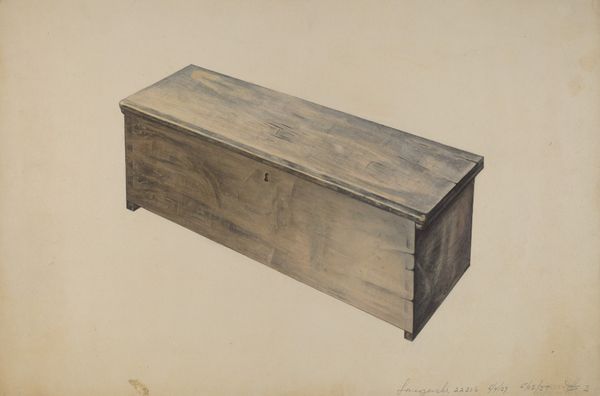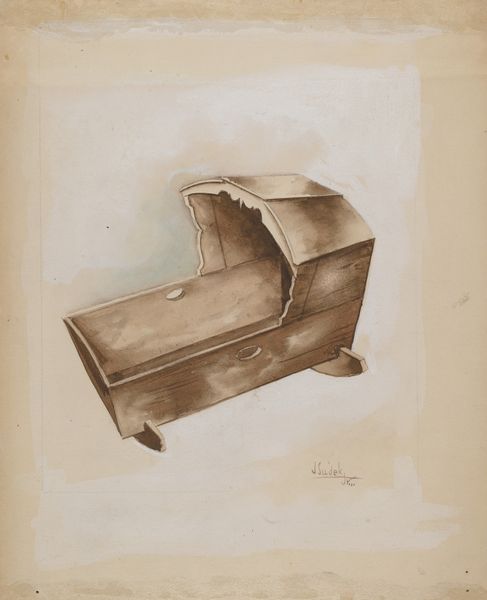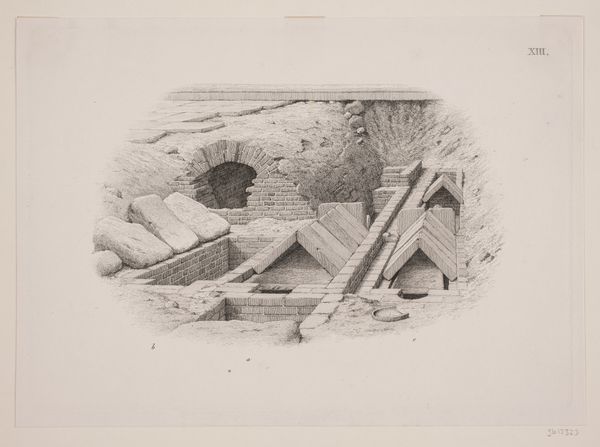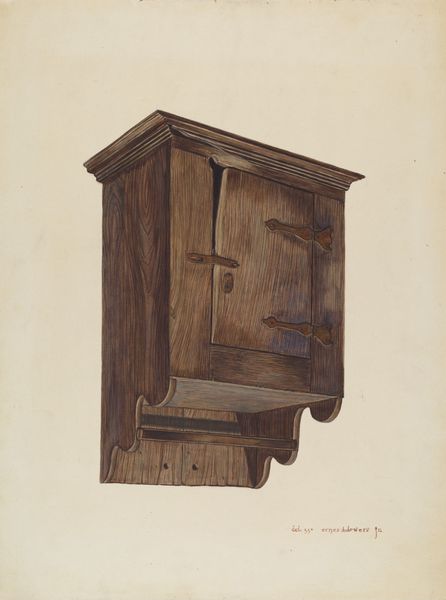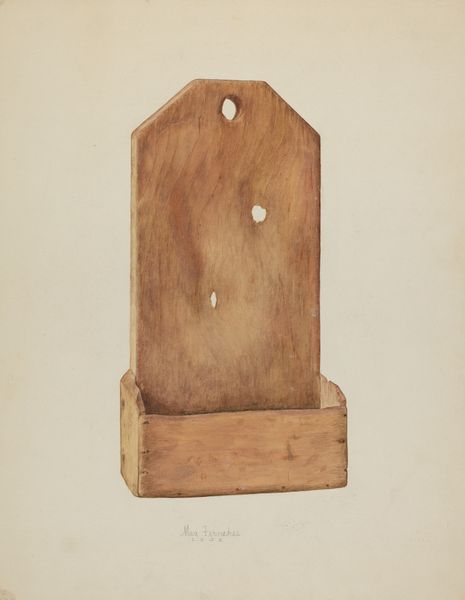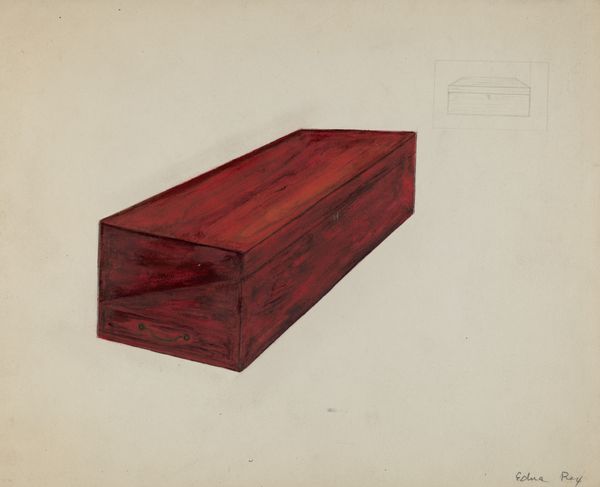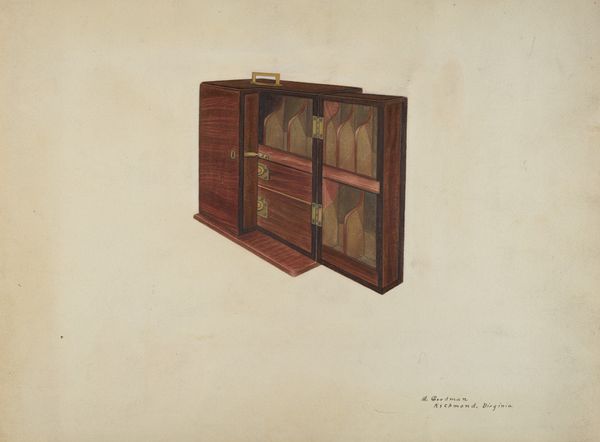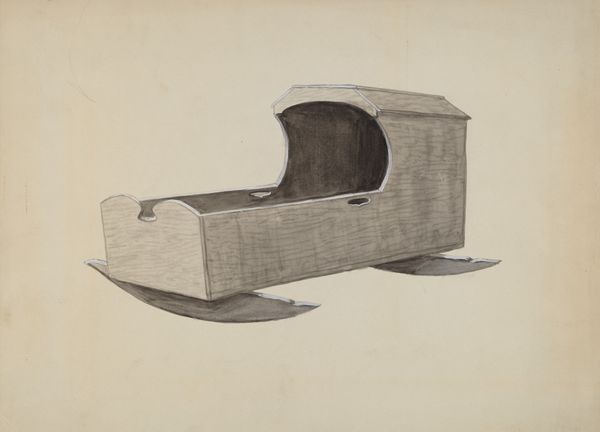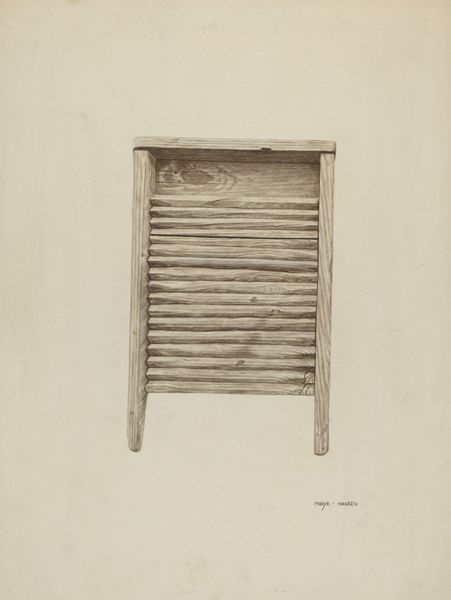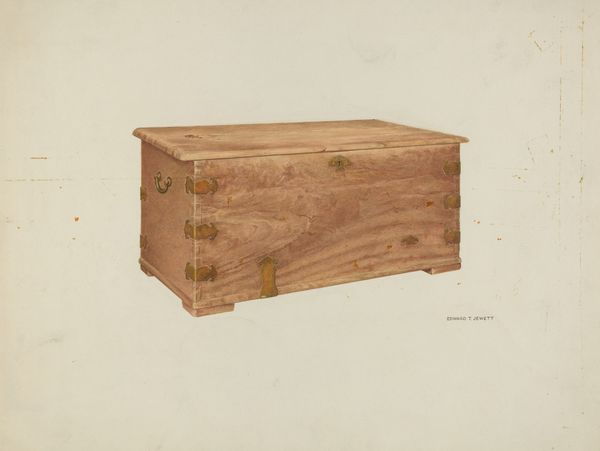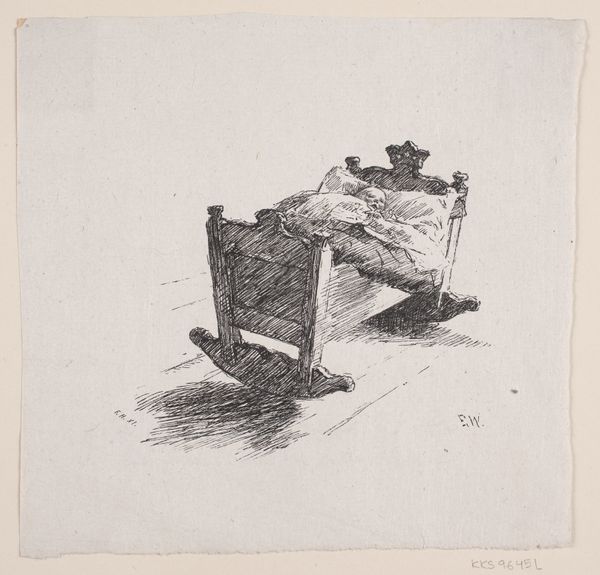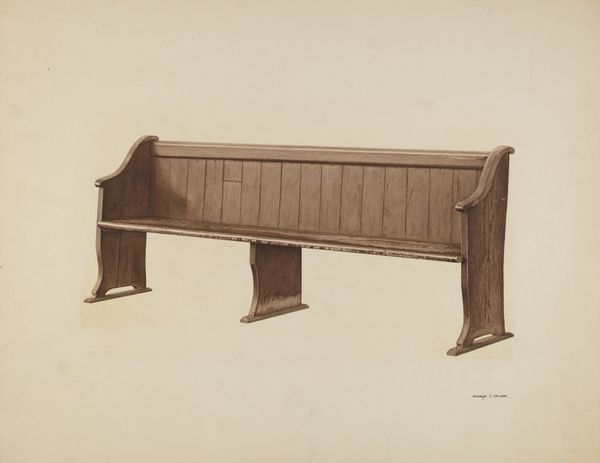
drawing, watercolor, architecture
#
drawing
#
form
#
watercolor
#
geometric
#
line
#
watercolor
#
architecture
#
realism
Dimensions: overall: 27.7 x 35.4 cm (10 7/8 x 13 15/16 in.) Original IAD Object: 2'9 1/2"long; depth at wall 12"
Copyright: National Gallery of Art: CC0 1.0
Curator: This is "Corbel," a 1939 watercolor and ink drawing by Harry Mann Waddell. What are your initial thoughts? Editor: Stark! There's a quiet, almost melancholy stillness to the work. The limited color palette and focus on a single architectural element contribute to a sense of isolation, wouldn't you agree? Curator: Yes, the use of watercolor really softens what could otherwise be a harsh industrial element. But for me, it highlights the intersection of functional construction and aesthetic detail. Consider the labor involved in crafting a corbel, both in selecting the raw materials and the woodworking process itself. Editor: True, and the close-up perspective invites a study of form: the geometry of the supporting timbers juxtaposed with the elegantly carved curves. Semiotically, the corbel acts as a bridge. Curator: Exactly! Bridges aren’t merely decorative. How does Waddell negotiate this balance? What statement is being made about architecture's relationship to craft? About whose labor is considered "art?" Editor: He also plays with light, accentuating the rough textures and subtle shifts in color on the weathered surface. Notice the nuanced shadowing; how the forms come into focus through tonal variation. He reveals a depth and complexity unexpected in something typically overlooked. Curator: And by representing this functional element with the fine art techniques of watercolor and drawing, Waddell elevates it, compelling viewers to reconsider what is deemed worthy of artistic representation. Who designs them, who builds them and under what conditions? Editor: It's a wonderful, understated piece. One that really encourages us to see beauty and perhaps dignity, even in the commonplace. Curator: I agree, we began to consider labor and craft. It causes one to contemplate our relationship with architecture itself as an integral part of the human-made world.
Comments
No comments
Be the first to comment and join the conversation on the ultimate creative platform.
